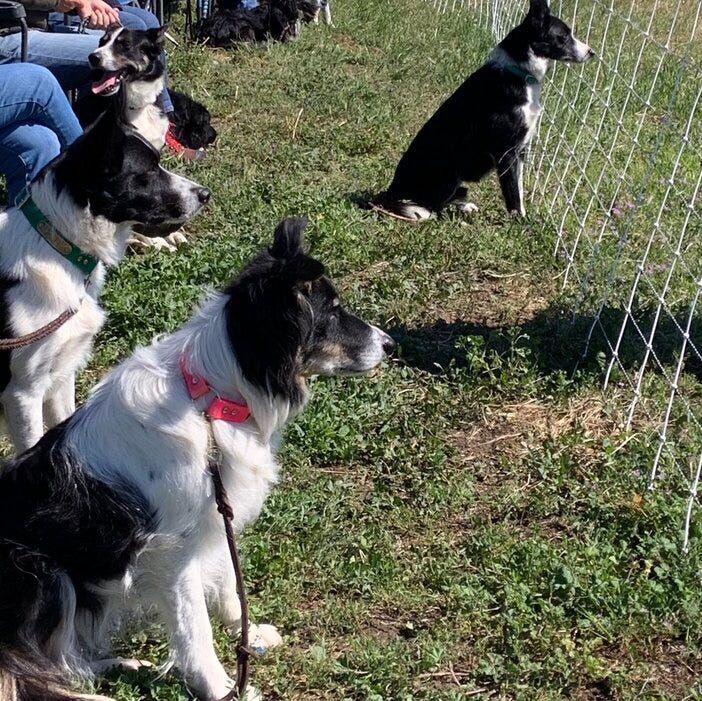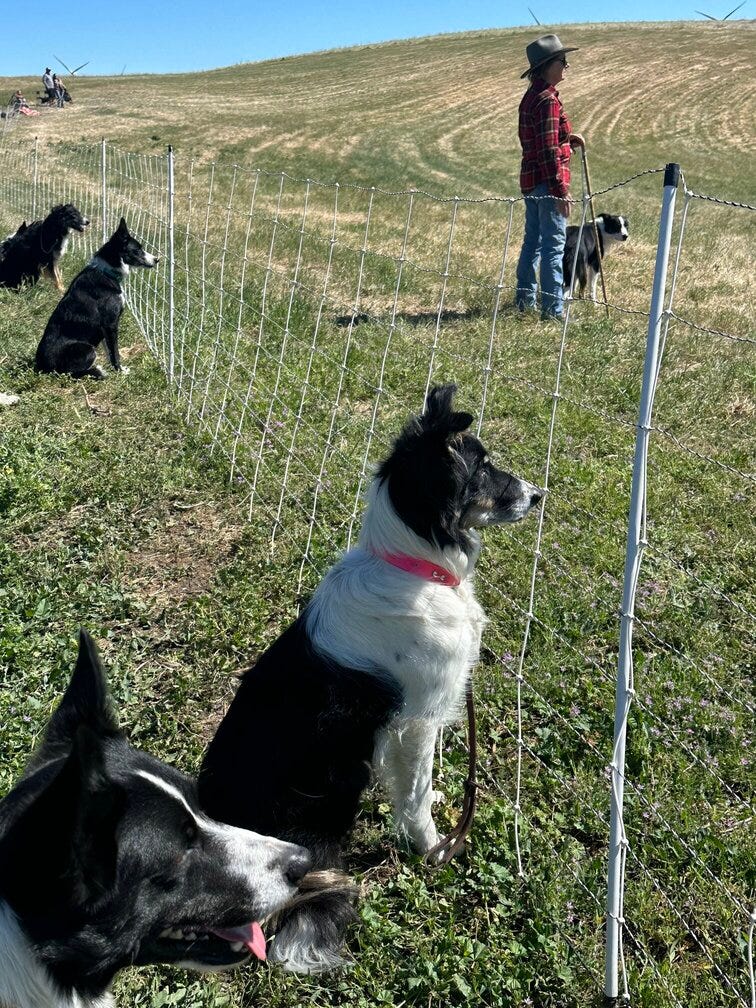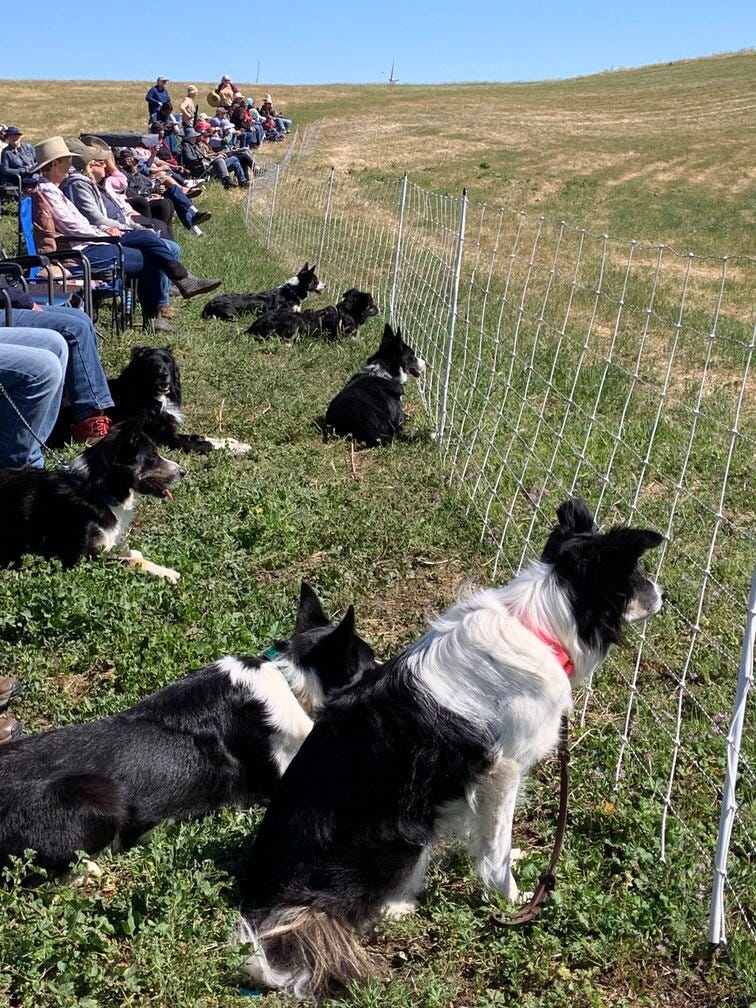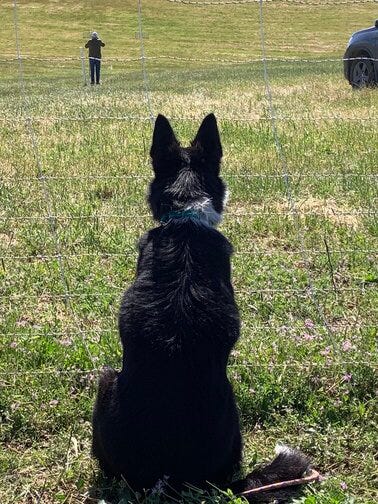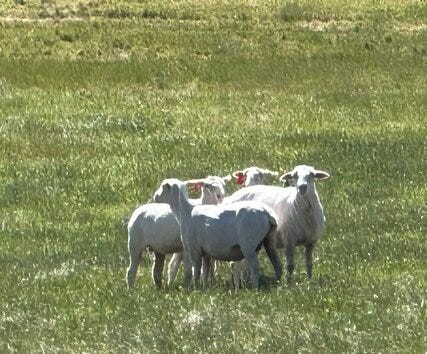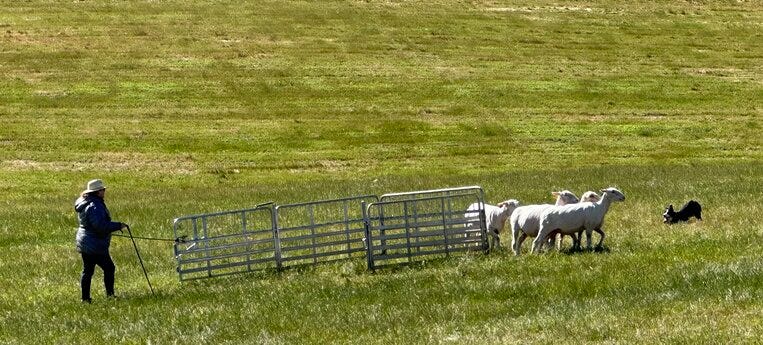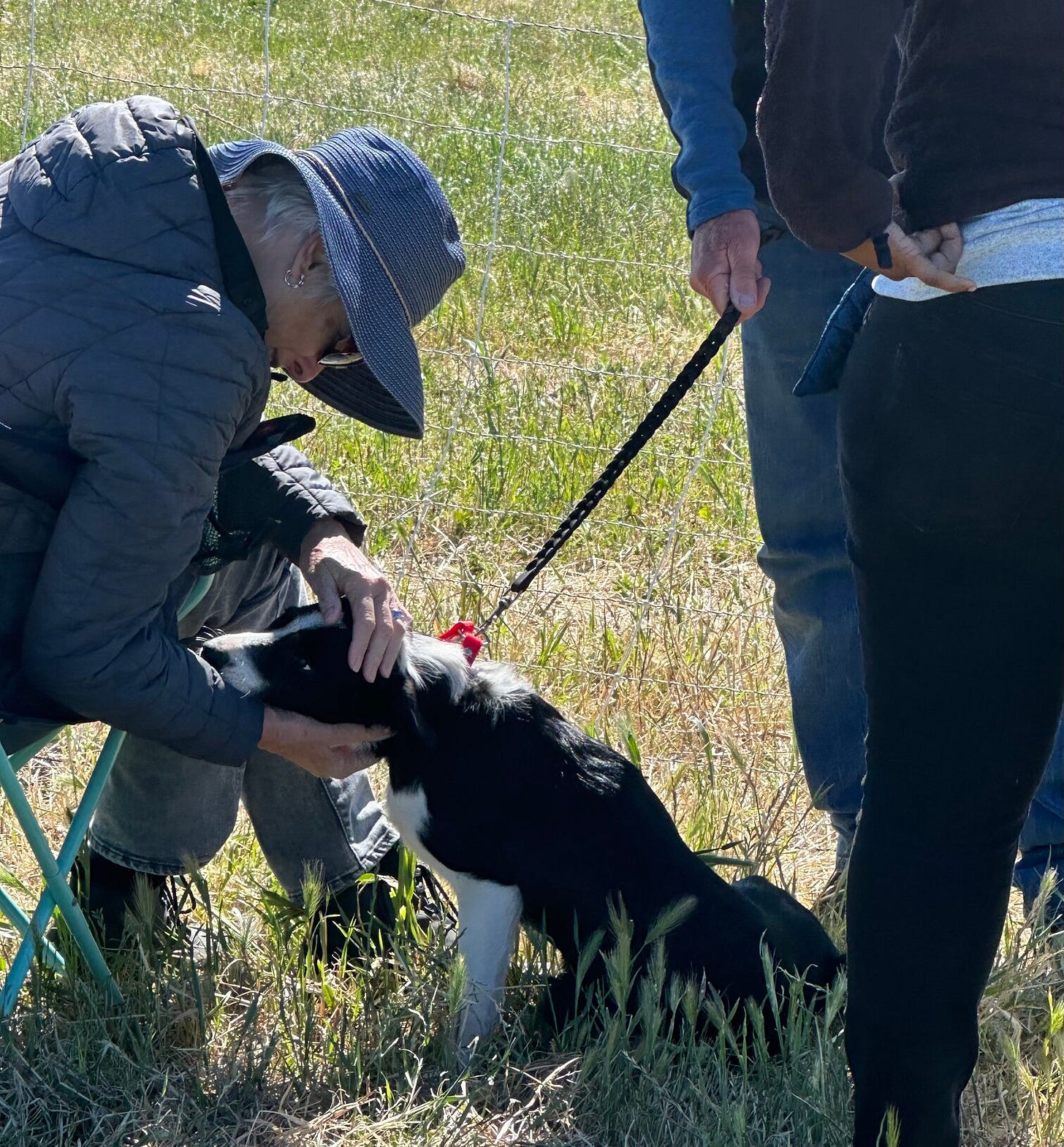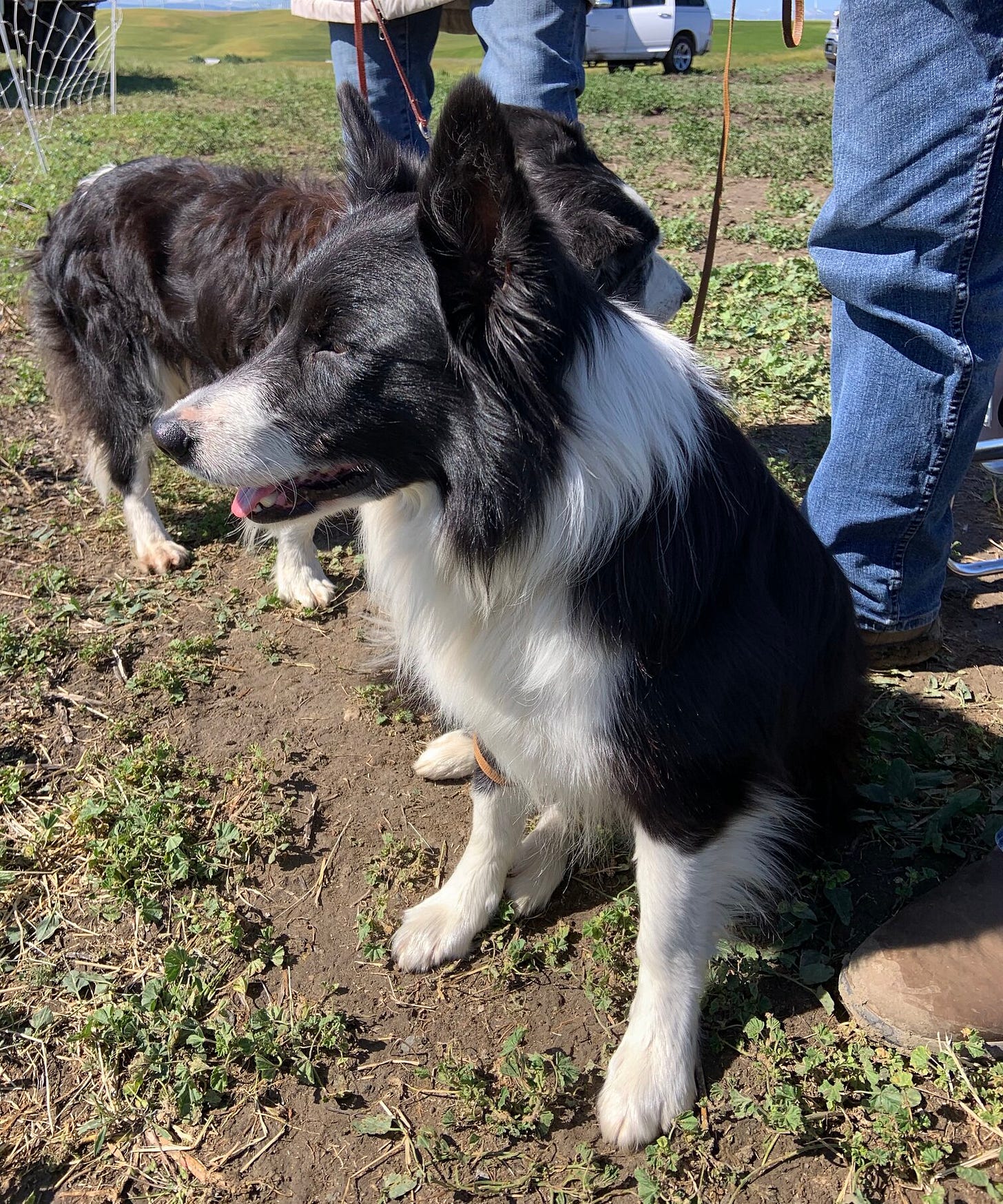Leaning In at the Sheepdog Trial
At ground zero for one of the biggest land use battles in California, a day for dogs and sheep
It is a beautiful day for a sheepdog trial.
Early May. The gently rolling hills and grassy pasturelands are still a vibrant green. Icy unexpected sheets of rain falling yesterday, today clear skies. Mustard flowers blooming, songbirds a-tweeting. The arms of the wind turbines cycling slowly in a counter-clockwise direction due to a nice westerly breeze. In summer the sun burns hot as a chimney out here and bleaches out any vestige of green.
We are on McCormack Ranch in farm country, in eastern Solano County about an hour west of Sacramento. The Great Central Valley, California’s fruit and vegetable basket. Given this peaceful and isolated rural setting, it seems oddly incongruous that this area has become the flashpoint for one of the biggest agricultural, land use, and environmental fights in California.
But today, the primary focus is on the dogs, the glorious hard-working, eager-to-please, laser-focused border collies.
We roll our Rav 4 up a rocky dirt grade and park. Most of the other vehicles are trucks. Many of the men and women wear boots and cowboy hats or straw hats. There is a truck where you can buy BBQ. Next to it is a tented area where they’re handing out flyers and talking to people about the land fight.
Sheryl Sandberg may have popularized the concept. You may feel you’re pretty good at it in a business meeting or listening to a friend tell you about her relationship issues. But lemme tell you, no human being alive can do it like the border collies we saw pressing up against the fence that separated the spectator section from the field course where the trials take place.
Now, that is leaning in.
The primary job of a sheepdog on a ranch is embedded in its name: dogging those sheep so they’ll go where the rancher or handler wants them to go. This requires rounding the sheep up into a pack, then herding that pack into a pen. Today’s trial has drawn dogs and people from all around the state and Nevada and Washington. Its purpose is to build the skills of the sheepdogs in a friendly competitive format and see who’s best.
What makes everything interesting for humans and canines alike is that the sheep gathered for this event are no rollovers. They’re not “dog broke.” They’ve never been in a competition of this type before so they have no interest at all in meekly obeying what the border collies would like for them to do.
Besides all that, they’re frightened to death of them. Sheep really do regard dogs as wolves, as in Babe. They’re the prey, dogs are the predators. They may be worried a dog is going to eat them. So they stick together. Getting cut loose from the herd is dangerous for them.
We meet a couple, Meg and Nate Smith, who have brought their two border collies, Susan and Gordy, up from their home in Santa Cruz. Seven-year-old Gordy will participate later in the day, although he’s not formally competing in the event. “He’s never run a field course like this before,” explains Nate. “He did it for the first time yesterday. Today will be his second time.”
We watch as a border collie begins his trial with what is called “the outrun,” setting out across the field after the sheep who are always grouped in packs of four. “The lift” is when he makes contact with them and starts them on a series of maneuvers that includes walking them through and around gates and an easy-to-miss red cone lodged in the grass. The dogs are all action—dodging, darting, crouching, and dropping their belly to the ground as if crawling under the lowest strand on a barbed wire fence. “Penning” the animals marks the end of the timed 10-minute test.
There are about 150 spectators, seated in folding lawn chairs along the fence, many of them handlers with dogs in the competition. Although the dogs are the stars of the show, they regard their handlers with respectful adoration, deferring to them at every turn. Handlers issue voice commands or with a whistle. They typically prefer using a “crook,”—“like Mary had a little lamb,” says Meg—which has a hook at the top that allows them to capture a reluctant sheep by the neck (although they would never do this in a competitive trial, only on the ranch). Nate likes a straight stock stick when working with Gordy.
It’s easy to see how things can go off script pretty quickly. One dog is attempting one of the hardest trials in the test—“The Shed and the Single.” It consists of separating one sheep from the other three and herding the group through a gate. Meantime the lone sheep must stay put.
This goes against every instinct a sheep has. Sheep are…sheep. They don’t want to be at the mercy of a wolf. So all four of them bolt up a hill out of the competition area. The dog and his frustrated handler continue to give chase but their chances of scoring high are over.
There are murmurs of disappointment behind the fence. Most everyone who handles sheepdogs has experienced similar problems with uncooperative sheep. When a dog does well on a given test, however, those in the folding chairs break into applause.
“This is as unpretentious a sport as there is,” Meg Smith tells me. “Everyone is happy when the dogs do well. Lots of competitions are not like that, where people are more interested in their own stuff.”
Every dog starts with 100 points and is judged according to his performance. “There are no perfect runs,” Nate explains sagely. In life as in sheepherding.
We do not stay long enough to see Nate and Gordy run the course, but I can confidently vouch for Gordy’s character. Susan, his 16-year-old companion, used to compete but age and achy bones have caught up with her and she had to retire. Even so she still likes to go out on training sessions, and when she does Gordy sticks with her and sort of watches out for her, making sure she’s safe and nothing bad happens to her.
Besides being a useful and practical test for the dogs and a social event for the sheepherding community, the McCormack Ranch Sheepdog Trial served as a fundraiser for the farmers and ranchers who live in this area and have worked this land for generations. They and many others oppose the efforts of a group of very wealthy Silicon Valley venture capitalists and others that go by the name of “California Forever.” California Forever’s plan is to build a city of 400,000 people, nearly the population of Oakland, in this pastoral landscape. More on this to come.




